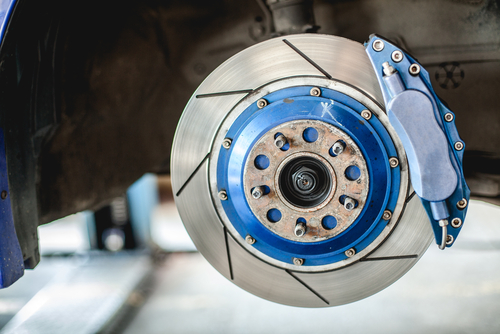Brake Fluids
Brakes are a main component in passenger cars, trucks and agricultural machinery among other vehicles and also one of the most neglected areas in our vehicles even though they are relevant when it comes to vehicle safety.
The main purpose of the brake fluids is transferring foot pressure to the brakes or hydraulic clutch system, in order to do their job they must meet a series of properties such as:

Compressibility: The brake fluid must have a very low compressibility in order to transfer the pressure from the master cylinder to the wheel brakes effectively.
Boiling point: when braking, the brake system heats up also heating up the brake fluid, which is why a high dry and wet boiling point (ERBP) is necessary.
Viscosity at low temperatures: It is necessary to have a low viscosity, since a viscosity that is too high would reduce the response of the assistance system, such as the Electronic Stability Program (ESP).
Aging stability: brake fluids are subjected to both very high and very low temperatures and this causes the brake fluid to thicken, to generate deposits or to produce a major failure in the cylinders, valves, pumps, etc.
Material Compatibility: Elastomers in the brake system are incompatible with fluids such as mineral oils, so selecting the correct base oil is key.
Foaming properties: foaming should be avoided at all costs as gases are compressible.
There are two main types of brake fluids according to their behavior against water:
- HYGROSCOPIC: Glycol Ether (DOT 3, 4, and 5.1) brake fluids are hygroscopic, meaning they absorb moisture from the atmosphere at normal humidity levels.
- HYDROPHOBIC: Non-hygroscopic liquids such as Silicone / DOT 5 based formulations and mineral oils, are hydrophobic, so they can maintain an acceptable boiling point throughout the useful life of the liquid.
Hygroscopic brake fluids are the most used in vehicles. For this reason, the drain interval for brake fluids must be respected and should be of approximately two years. This range is chosen considering that the corrosion inhibitors are consumed during the operation of the fluid and that the water that absorbs the liquid lowers the ERBP boiling point.
The following chart lists the most used brake fluids:
| Dry boiling point (ºC) | Wet boiling point (ºC) | Viscosity at -40ºC (mm2/s), max. | Main component | |
|---|---|---|---|---|
| DOT 2 | 190 | 140 | / | Alcohol / castor oil |
| DOT 3 | 205 | 140 | 1500 | Glycol ether |
| DOT 4 | 230 | 155 | 1800 | Glycol ether / borate ester |
| LHM + | 249 | 249 | 1200 | Mineral Oil |
| DOT 5 | 260 | 180 | 900 | Silicone |
| DOT 5.1 | 260 | 180 | 900 | Glycol ether / borate ester |
Note: DOT 3 / DOT 4 / DOT 5.1 fluids are miscible, but compatibility must be checked in each case. DOT 5 fluids are not miscible with other fluids.
Attention: elastomers (seals, hoses, etc.) are not compatible with oil!
